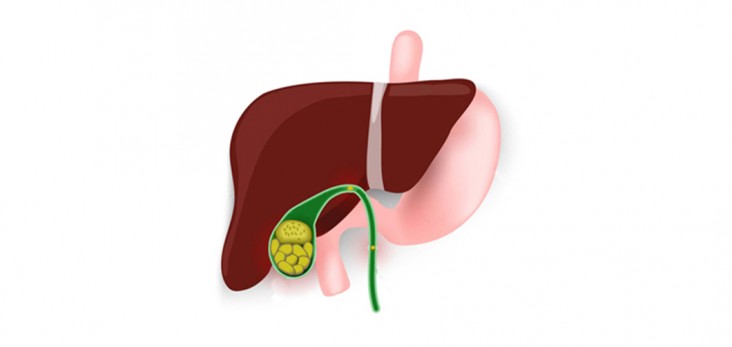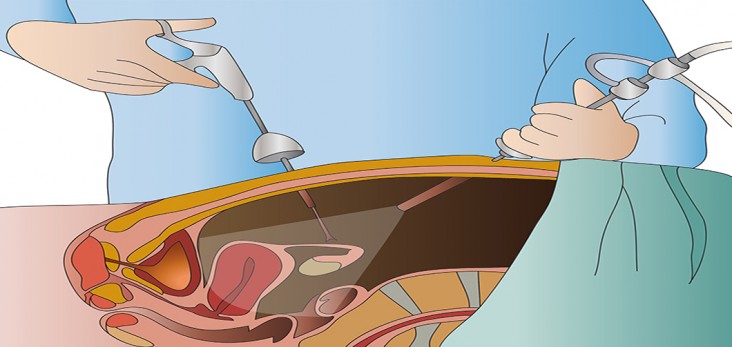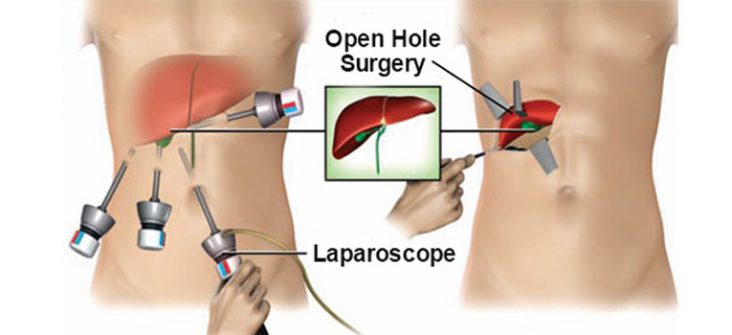Laparoscopic gallbladder surgery is the best choice of treatment for gallstones with severe signs and symptoms, disrupting one’s life style. It is time-saving and minimally invasive.
What are gall stones?
Gallstones are some stone like hard depositions in the gallbladder made out of Cholesterol, salt and Bilirubin (made out of destructed blood cells). Being a very common condition, gallstones vary a lot in size whereas some can be as small as a particle of sand where others can be as large as apples.
Obesity, high consumption of cholesterol rich food, a rapid weight loss within a short period of time, Diabetes mellitus and long term intake of a high-fiber diet are the major risk factors for this condition to occur. Moreover, owing to a significant female predominance, Gallstones are most likely to affect people over 65 years of age, pregnant mothers and individuals with a positive family history.
Treatment options
Gallstones are usually treated depending on the severity and how they could disrupt the quality of life.
Patients without symptoms yet diagnosed with gallstones, coincidentally in ultra-sound scans, the concept of ‘active monitoring’ is recommended. This method doesn’t involve any immediate treatment, but prompt medical advice should be sought as soon as you notice unusual presentations like yellowish discoloration of the skin or mucosal membranes (obstruction by gallstones)
As a rule of thumb, the more you go without getting any sign or symptom, related to gallstones, the less likely it is to get the condition worsened. But there are occasions where you may need to get medical treatment even if you don’t get any presentation mentioned above, which include underlying Diabetes, portal hypertension or scarring of the liver-Cirrhosis
Treatment is also indicated if a scan reveals a high level of calcium inside the gallbladder which can lead to gallbladder cancer in future or if there are frequent episodes of abdominal pain. If they are mild and infrequent, conservative management is alright with painkillers to relieve discomfort and healthy diet which might help in reducing further episodes.
Some doctors prescribe medications to dissolve gallstones which are small in size and do not contain cholesterol e.g. Ursodeoxycholic acid
Surgical interventions are considered if the signs and symptoms of the gallstones become severe such and disrupt a person’s quality of life to avoid complications due to stones.
The main surgical treatments available for Gallbladder removal
- Gall bladder laparoscopic surgery – A keyhole surgery performed under general anesthesia, which will only take 60-90 minutes.
- Patients will be fully recovered after about 10 days.
- Single-incision keyhole surgery – Latest type of keyhole surgery where the gallbladder will be removed by making only one hole on the abdomen.
- Open surgery – A cut-open type surgery indicated in pregnant mothers in their third trimester, extremely overweight and unusual anatomical structure of gallbladder or surrounding structures which might make the surgery difficult.
- Endoscopic retrograde cholangio-pancreatography (ERCP) – Removes only the stones from the gallbladder without removing the entire organ.
Because of all these latest and advanced laparoscopic surgical options available nowadays, you won’t have to suffer from gallstones anymore.









